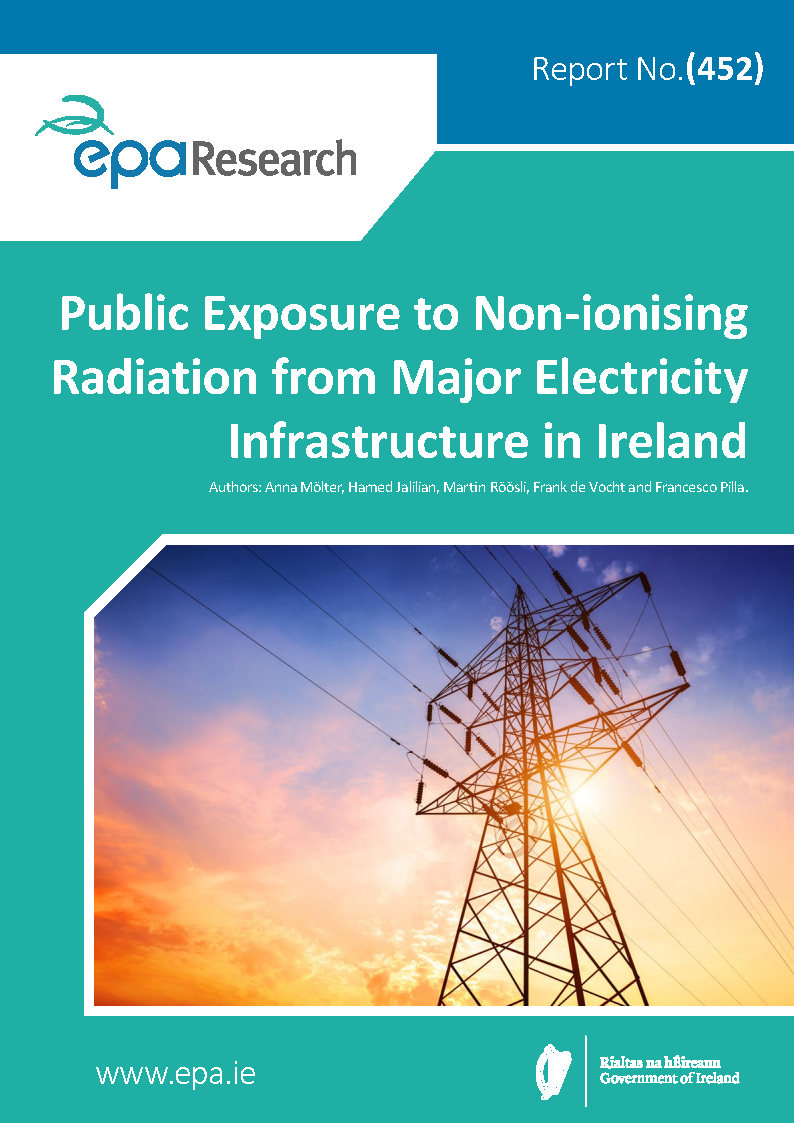Authors: Anna Mölter, Hamed Jalilian, Martin Röösli, Frank de Vocht and Francesco Pilla
Summary: Major electricity infrastructure, such as high-voltage power lines, transformer stations and substations, emits non-ionising radiation in the form of extremely low-frequency electromagnetic fields (ELF EMFs). Potential health effects associated with long-term exposure to ELF EMFs have been a concern since the late 1970s. However, epidemiological studies of health risks of ELF EMF exposure have reported varying results, and a causal relationship has not been established. This research report presents a review on the published literature in relation to populations exposure to ELF EMFs, epidemiological studies on associated health risks, current EU policies, monitoring strategies, methods to reduce exposure and strategies for risk communication.

Major electricity infrastructure, such as high-voltage power lines, transformer stations and substations, emits non-ionising radiation in the form of extremely low-frequency electromagnetic fields (ELF EMFs). Potential health effects associated with long-term exposure to ELF EMFs have been a concern since the late 1970s, and the International Agency for Research on Cancer has classified ELF EMFs as a category 2B risk, which means they are “possibly carcinogenic to humans”. However, epidemiological studies of health risks of ELF EMF exposure have reported varying results, and a causal relationship has not been established.
The objectives of this project were to review the published literature on:
• studies on population exposure to ELF EMFs from major electricity infrastructure;
• epidemiological studies on health risks associated with ELF EMF exposure;
• current EU policies on ELF EMF exposure, monitoring strategies and methods to reduce exposure;
• risk communication strategies for ELF EMF exposure risks.
Major electricity infrastructure developments are periodically required to ensure the security of the energy supply. However, these types of developments often attract public opposition, and during previous developments in Ireland, health risks due to exposure to EMFs were one of the concerns. A major electricity infrastructure project that is currently ongoing in Ireland is the Celtic Interconnector, an undersea electricity link between Ireland and France with a transmission capacity of 700 MW via 320 kV power lines.
Under the Radiological Protection Act 1991 (Non-Ionising Radiation) Order 2019 (SI No. 190 of 2019), the EPA was assigned responsibilities for public exposure to non-ionising radiation, which includes emissions from existing and new electricity infrastructure, such as the Celtic Interconnector. Therefore, it is important for the EPA to have an up-to-date knowledge base of exposure levels associated with ELF EMFs from major electricity infrastructure, and of potential health risks. Furthermore, the EPA needs to be informed about state-of-the-art policies in EU countries and risk communication strategies, to respond to public concerns.
This report provides a number of recommendations for Ireland, including recommendations on the reference level for public exposure to ELF EMFs from major electricity infrastructure, as well as on regulatory monitoring practices, risk communication, and further research and capacity building. With regard to public exposure to ELF EMFs from major electricity infrastructure, it is recommended that Ireland implements the reference level recommended by the EU. In addition, the introduction of precautionary policies is recommended for the construction of new high-voltage electricity infrastructure in Ireland and the construction of new buildings. With regard to regulatory monitoring, it is recommended that surveys are carried out after the construction of new high-voltage infrastructure, or after modifications of existing infrastructure that will change the voltage or current. The results of these surveys should be made publicly available. To improve risk communication, the introduction of a process through which local authorities can request an ELF EMF field survey is recommended if there is significant public concern. Finally, this report shows that there are great opportunities for further research and capacity building on this topic in Ireland.
https://www.epa.ie/media/epa-2020/research/research-publications/Research-Report-452-cover-photo.jpg